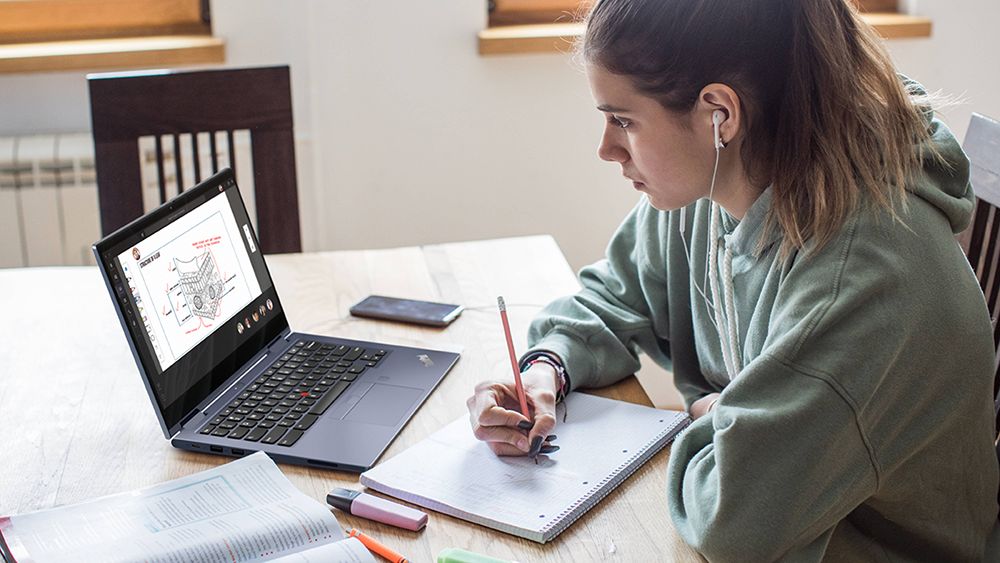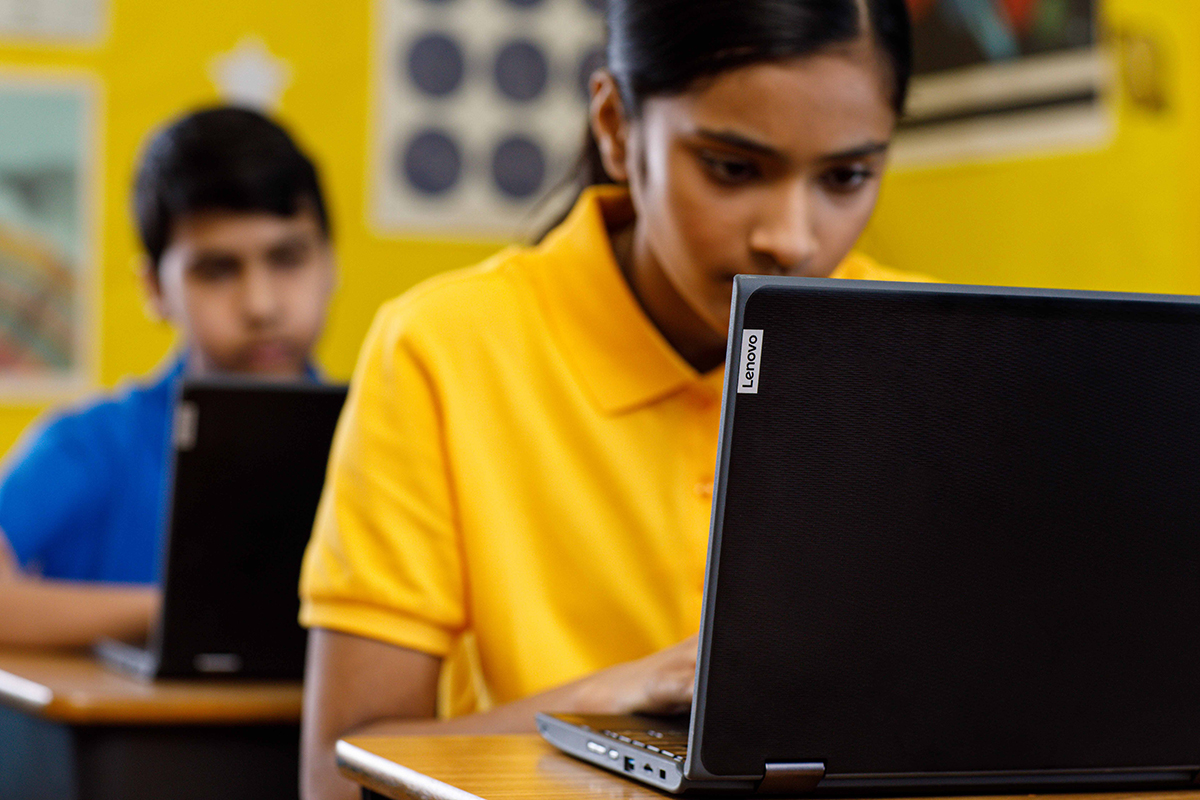Hybrid learning has the potential to equip millions of students about to enter the workforce – if its challenges are addressed immediately
As hybrid learning solidifies its place in our new normal, it is vital that we address today’s challenges to digital learning to prepare tomorrow’s workforce.
The rise of hybrid learning in response to COVID-19 restrictions seems to present a silver lining. Across industries, technological aptitude is a good indicator of success. Students practicing hybrid learning are gaining and building upon technological skills that will make them more competitive in the workforce.
Introducing more technology into classrooms — physical and virtual — has offered students accessibility and convenience, but also presented new challenges. Distractions, lack of motivation, and a disconnect between educator and student suggest students may not be able to keep up with their educations, according to a 2021 education study by Lenovo and Microsoft.
By harnessing the full potential of online learning, we can lay the basis for a skilled workforce of tomorrow.

Bringing a different kind of creativity into the classroom
In 2020, the peak of the COVID-19 pandemic saw an estimated 1.6 billion students out of school. A year later, over 800 million students globally continue to grapple with complete or partial school closures. The study conducted by YouGov and Terapinn saw over 80% of upper-level and 95% of educators increased their use of technology in the classroom within the past year in Asia Pacific.
Standout challenges to online learners — distractions, lack of motivation and immediate feedback from their educators, and social isolation — didn’t stop students from recognizing the benefits of online learning. Nearly two-thirds (63%) of students found accessibility to be a major advantage, while 62% found that it saved time and eliminated the need to commute.
Lowering barriers to an engaging, fulfilling digital learning experience is crucial to growing these proportions and getting students back on track. To do that, we need to approach our education technology more creatively — combining new, engaging technologies in the classroom alongside adequate support.
For example, AR and VR solutions can help students reduce learning time for new skills and improve retention while being more cost-effective. The introduction of integrated and comprehensive AR and VR solutions such as Lenovo’s ThinkReality solution can open the doors for students to experience limitless immersive environments.
It’s a door that stands wide open, but only one-third of educators have explored Augmented Reality (AR) or Virtual Reality (VR) technologies.
Meanwhile, existing technology has not been fully utilized with merely 38% of students using video conferencing applications for their lessons, and an even smaller proportion (20%) of students are using cloud-based file-sharing services.

Expanding the classroom and creating the next generation of lifelong learners
Expanded and enriched access to hybrid learning helps close the gaps between students and their knowledge. Streamlining the systems that students use in school can help encourage use, giving students access to devices, support, and services in one place.
A number of local government units (LGUs) initiated their own programs to provide assistance to learners and educators alike during the shift to online learning. Pasig City procured at least 138,000 tablets worth PHP1.3B, San Juan City partnered with the Department of Information and Communications Technology (DICT) to acquire 11,000 tablets and 1,500 laptops, and Manila City donated tablets to students of the Universidad de Manila (UDM) worth PHP8.8M.
In the recent EDUTech 2022 forum in February, Undersecretary for Administration Alain Del B. Pascua said that the pandemic made us realize there are still other technologies we need to use and that it also accelerated the digitization of education. He pointed to DepEd Commons, an online platform where resources and learning materials are shared, as an example of the Department of Education’s move towards digitalization and upskilling for teachers.
We can also lean on technology to help develop less quantifiable soft skills that are still vital within the workplace. Implementing custom education technology software and hardware, including Lenovo’s end-to-end Smart Classroom solution, can prepare students for future workplaces while developing the collaborative skills they need for success. Using a combination of devices, students can collaborate with each other on projects in multi-dimensional ways.
Framework for the future
While the global pandemic led to seismic shifts in the education landscape, it has also laid the foundation for a new training ground for the future digital working world. As students experiment and become familiar with a variety of learning methods and technologies, they not only finesse their digital skills but also develop the ability to adapt quickly and resiliently to change. As new technologies quickly become relevant in the workplace, students equipped to take up new skills boldly — at any age — stand the best chance for success.
Words by Michael Ngan, country general manager at Lenovo Philippines
